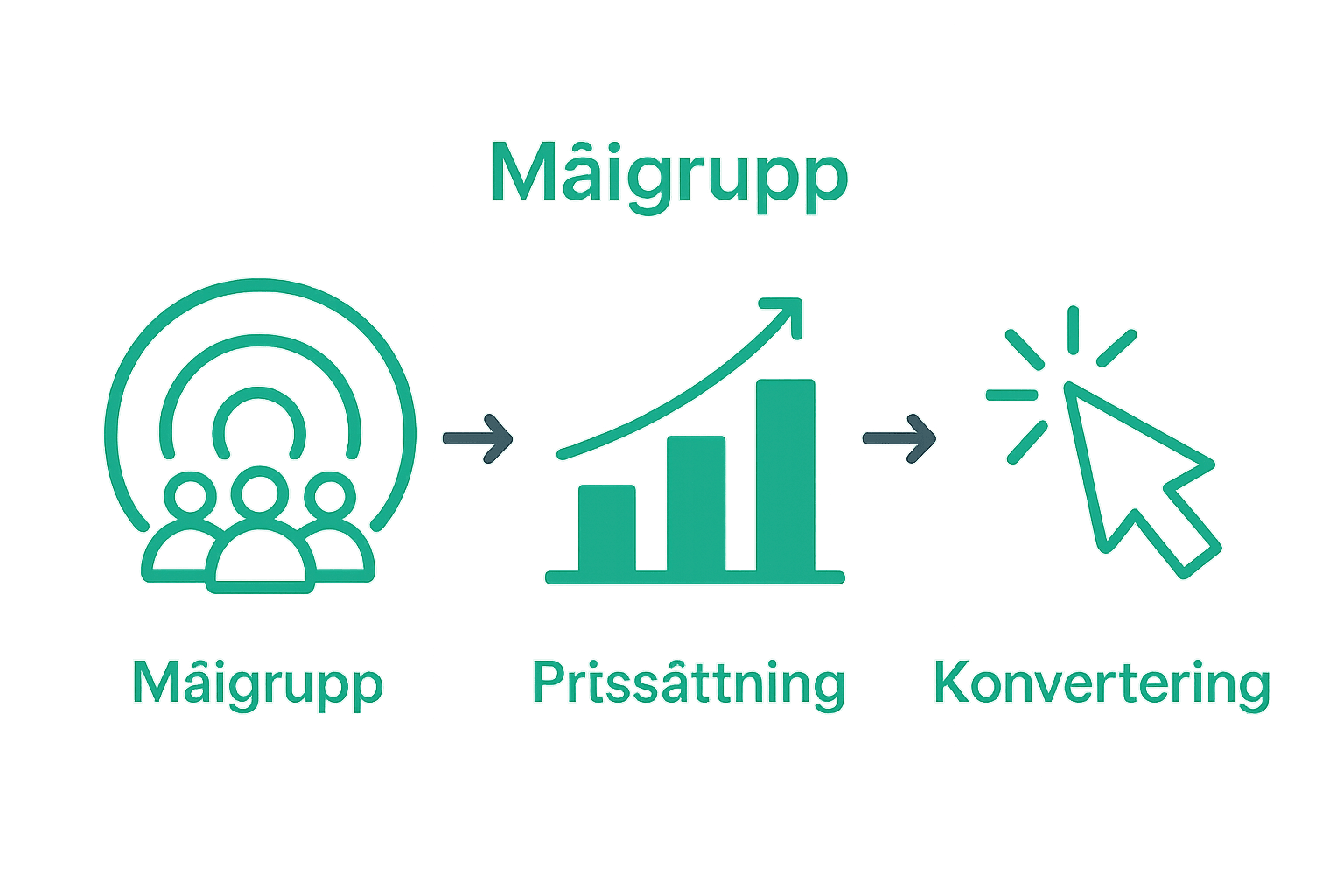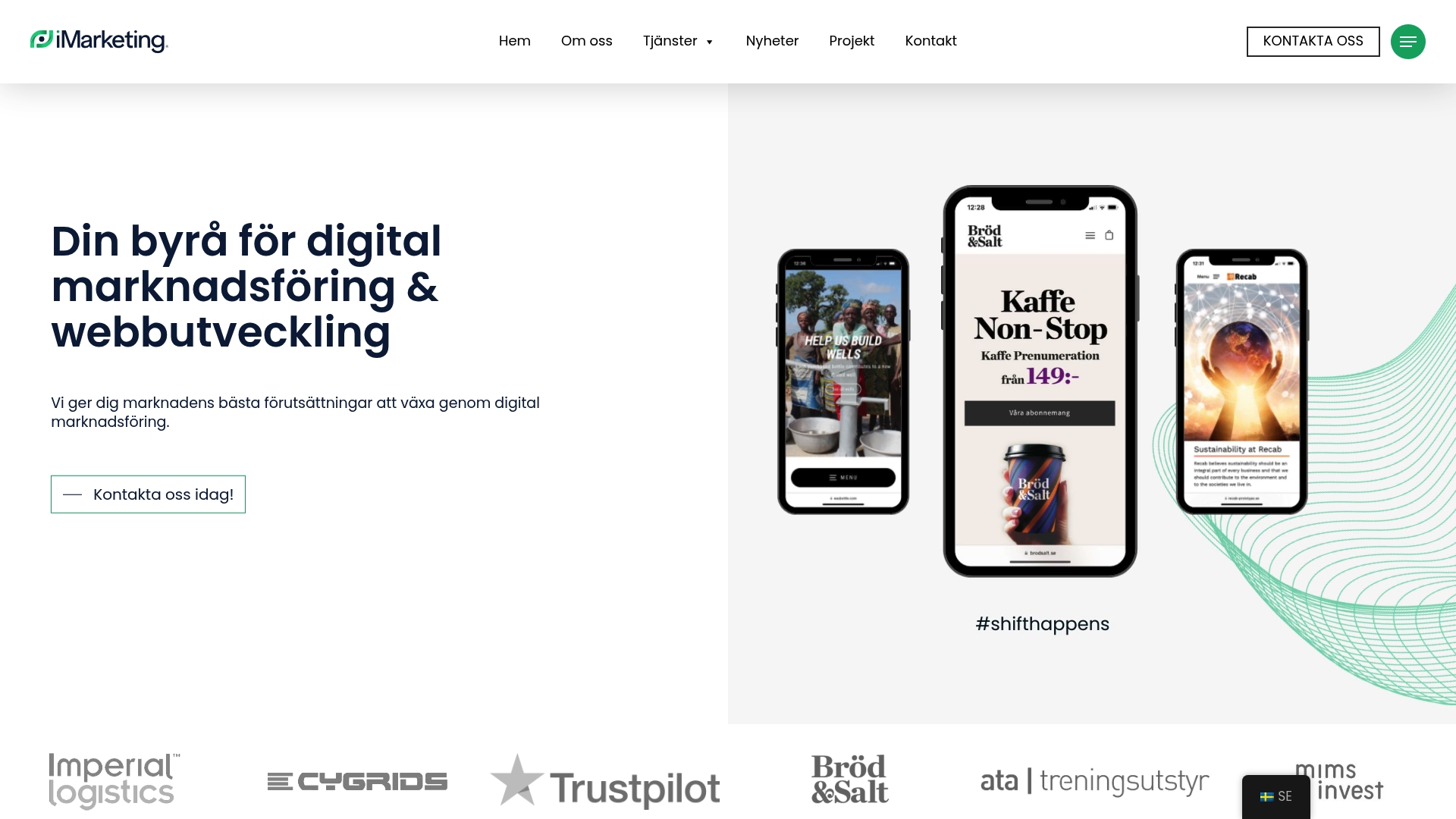Did you know that over 80 percent of Swedish companies invest in digital advertising today? For many, it's about reaching the right customers quickly and accurately, often with limited resources. Digital advertising gives small and medium-sized businesses the chance to compete on the same terms as large players and at the same time measure the impact of every dollar invested with impressive precision.
Table of contents
- What is Digital Advertising?
- Different Forms of Digital Ad Formats
- How Digital Advertising Works Technologically
- Target Group Targeting and Pricing Structure
- Automation and Optimization Techniques
- Legal, Privacy and Regulations
Key Points
| Points | Details |
|---|---|
| Digital advertising enables precisely targeted marketing | By using data analytics and algorithms, companies can reach specific demographic groups and improve efficiency. |
| Choice of ad format affects visibility and engagement | Different formats such as search ads and video ads have unique advantages depending on marketing goals. |
| Automation maximizes returns | Automated systems can adjust bids and optimize campaigns in real time to increase profitability. |
| Compliance with legal requirements is crucial | Companies must navigate data protection and advertising regulations to ensure good customer trust. |
What is Digital Advertising?
Digital advertising is a dynamic marketing strategy that involves spreading messages and promoting products or services through digital channels. Unlike traditional marketing, digital advertising leverages the internet and electronic devices to reach potential customers with precision and efficiency.
The main components of digital advertising include various formats such as:
- Display ads: Visual ads that appear on websites and social platforms
- Search advertising: Ads that appear in search results based on specific keywords
- Social media ads: Targeted ads on platforms like Facebook, Instagram, and LinkedIn
- Video ads: Commercials placed on YouTube and other video streaming services
The central goal of digital advertising is to create measurable and targeted communication. Through advanced algorithms and data analytics, companies can now target their ads to specific demographics, interests, and behavioral patterns, enabling a more cost-effective and precise marketing strategy compared to traditional advertising methods.
For small and medium-sized businesses, digital advertising offers a unique opportunity to compete with larger players. With the right digital marketing strategy Even smaller businesses can reach out widely and create significant business opportunities.
Different Forms of Digital Ad Formats
Digital ad formats is no longer a one-way communication channel but a complex ecosystem of interactive and targeted marketing tools. Google Ads offers a variety of ad formats that give businesses the flexibility to choose the most effective method for their specific marketing goals.
Main digital ad formats include:
- Search advertising: Text-based ads that appear in search results
- Display ads: Graphical ads that appear on various websites
- Video ads: Moving advertising messages on platforms like YouTube
- Social media ads: Targeted ads on networks like Facebook and Instagram
Each ad format has unique advantages. Search advertising reaches customers who are actively searching for specific products, while display ads build brand awareness through visual exposure. Video ads create engagement through storytelling, and social media ads allow for extremely precise demographic targeting.
Here is a comparison of the most common digital ad formats:
| Ad format | Main channel | Benefits |
|---|---|---|
| Search advertising | Google, Bing | High purchase intention Text-based Quick visibility |
| Display ads | Websites, apps | Visual exposure Good for brand Wide range |
| Video ads | YouTube, streaming services | High commitment Narration Good for branding |
| Social media ads | Facebook, Instagram, LinkedIn | Target audience targeting Interactivity Rapid testing |
For small and medium-sized businesses, choosing an ad format is about understanding their audience and choosing channels where potential customers are most receptive. By experimenting and analyzing results, businesses can optimize their digital advertising strategies for maximum return on marketing investment.

How Digital Advertising Works Technologically
Digital advertising is a complex technological system based on advanced algorithms and data analysis. According to research data, platforms such as Google Ads through a sophisticated auction system where advertisers bid on specific keywords, and the ad's final placement is determined by an intelligent combination of bid amount and quality score.
The main components of the technological infrastructure include:
- Targeting algorithms: Analyzes user behavior and demographic data
- Bid management system: Optimizes ad placement in real time
- Performance measurement tools: Tracks and evaluates advertising results
- Machine learning algorithms: Continuously improves the accuracy of ads
The tech ecosystem enables extremely precise advertising by using cookies, search history and user interactions to create detailed profiles. This means that ads are becoming increasingly contextual and personalized, increasing the chance of conversion.
For small and medium-sized businesses, technological understanding is about realizing the potential of these systems. By leveraging advanced targeting techniques, you can reach the right customers at the right time, maximizing the return on your marketing investment.
Target Group Targeting and Pricing Structure
Target audience targeting is the core of effective digital advertising, where precision and strategic segmentation determine success. Through carefully defined demographic and behavioral parameters, small and medium-sized businesses can create extremely accurate dose campaigns that reach the right people at the right time.
Main targeting parameters include:
- Demographic factors: Age, gender, income, education level
- Geographic location: City, region, country
- Behavioral patterns: Past purchases, web browsing, interests
- Technological preferences: Device type, operating system
The pricing structure in digital advertising is flexible and is typically based on two primary models: Cost Per Click (CPC) where you pay when someone clicks on the ad, and Cost Per Impression (CPM) where payment is made per thousand impressions. This gives companies the opportunity to control and optimize their marketing budgets with great precision.
To maximize returns, experts recommend continuous testing and copywriting optimization to improve ad conversion rates and reduce costs per acquired customer.

Automation and Optimization Techniques
Automation has revolutionized digital advertising by introducing intelligent systems that continuously optimize marketing campaigns. According to research data, modern automation techniques involve the use of advanced tools that automatically adjust bids and optimize ad placements to maximize return on investment.
Main automation techniques include:
- Dynamic bid management: Real-time ad budget adjustment
- Algorithm-driven targeting: Intelligent selection of potential customers
- Predictive analysis: Predicts ad performance and conversion opportunities
- Machine learning: Continuous improvement of advertising strategies
For small and medium-sized businesses, these technologies offer an opportunity to compete with larger players by creating cost-effective and high-performing advertising campaigns. Conversion optimization becomes the key to success, where automated systems continuously analyze and improve ad performance.
The real power lies in the systems’ ability to learn and adapt. By using historical data and real-time insights, automated systems can make micro-adjustments that human marketers would miss, resulting in more effective and profitable advertising campaigns.
Legal, Privacy and Regulations
Digital advertising rules creates a complex legal environment that companies must navigate carefully to protect both consumer data and their business interests. Research data suggests that careful compliance with data protection and consumer rights guidelines is required to avoid potential legal consequences.
Important legal aspects include:
- General Data Protection Regulation (GDPR): Rules for handling personal data
- Consent and transparency: Requirement for clear information about data use
- Tracking and cookie policies: User Tracking Limitations
- Advertising guidelines: Rules for marketing communications
Small and medium-sized businesses need to pay particular attention to these regulations. Privacy Policy becomes crucial in ensuring that digital marketing strategies comply with applicable legislation and protect users' personal information.
In practice, legal compliance is about more than just following the rules. It is a commitment to customer trust and the long-term credibility of the business. By proactively managing privacy and data usage, companies can build stronger relationships and avoid potentially costly legal issues.
Get full control over your digital advertising with iMarketing
Navigating the complex landscape of digital advertising can feel overwhelming. Many companies struggle with targeting the right audience, managing bids cost-effectively, and constantly optimizing campaigns for the best results. As the guide describes, it is crucial to use technology solutions and automation to reach the right customer at the right time while complying with all legal requirements.

Let iMarketing be your partner in creating customized digital ads that really work. We combine advanced Google Ads expertise with a deep understanding of digital marketing and conversion optimization. Our solutions not only help you with your advertising strategy, but also provide support in copywriting and technical development for your website. Visit iMarketing.se today and take the first step towards securing your business's growth through effective and transparent digital advertising campaigns.
Frequently Asked Questions
What is digital advertising?
Digital advertising is a marketing strategy that uses the internet and electronic devices to reach potential customers through various channels such as search advertising, display ads, social media, and video ads.
What are the main benefits of digital advertising for small businesses?
Digital advertising offers small businesses a cost-effective method of reaching their target audience with precise direction and measurability, allowing them to compete with larger players.
How does audience targeting work in digital advertising?
Audience targeting uses demographic factors, geographic locations, behaviors, and technological preferences to create specific ads that reach the right customers at the right time.
What ad formats are available in digital advertising?
Common ad formats include search ads, display ads, video ads, and social media ads, with each format having its own unique advantages.


